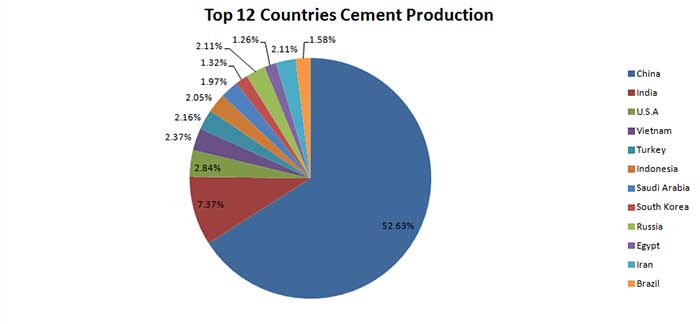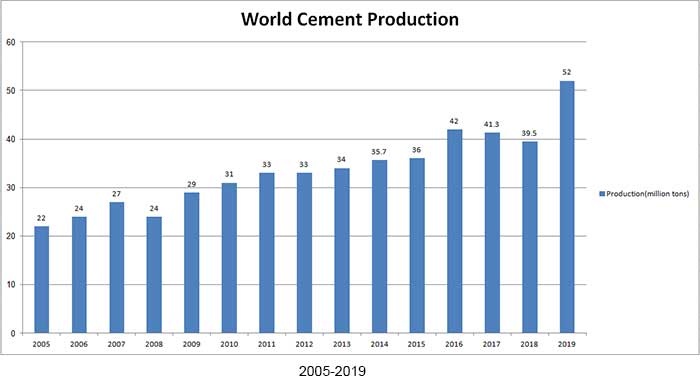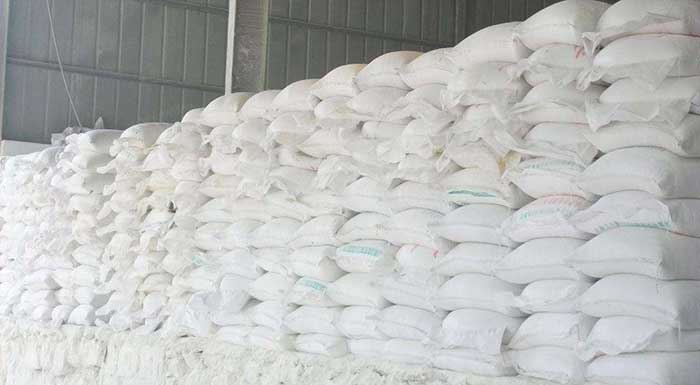The Development of Cement History (1756 – 2019)
Cement history can be traced back to ancient Rome, when the Romans used a mixture of volcanic ash and lime to add water to help the bricks glue together so that the house became more stable, but it was not used as a building material in large quantities at that time.

Cement History:From 1756 – 2019
1756
In 1756, J. Smithon, a British engineer, studied the hardening properties of some limes in water and found that limestone containing clay must be fired to obtain hydrated lime, and masonry mortar used in underwater buildings is composed of hydrated lime and volcanic lime. This important discovery laid a theoretical foundation for the development of modern cement.
1796
In 1796, J. Parker, an Englishman, fired a kind of cement from marl, which was brown in appearance, much like the mixture of lime and volcanic ash in ancient Rome. It was named Roman Cement. Because it uses natural marl as raw material and is fired directly without ingredients, it is also called natural cement. It has good hydraulicity and rapid setting characteristics, especially suitable for water proof engineering.
1824
In 1824, Joseph Aspdin, a British construction worker, invented cement and applied for a patent on Portland Cement. Using limestone and clay as raw materials, he calcined mature materials in a shaft kiln similar to lime burning, and then ground them into cement.
Portland Cement is named Portland Cement because its hardened colour is similar to the stone used in architecture in Portland, England. It has excellent building performance and epoch-making significance in cement history.
1871
In 1871, Japan began to build cement factories.
1877
In 1877, the rotary furnace was invented by Crampton, England, and was reformed into a better one by Lantham in 1885.
1889
In 1889, near Kaiping Coal Mine in Tangshan, Hebei Province, China, a “fine clay” factory was set up, which produce cement by vertical kiln. In 1906, Qixin Lime Company was established on the basis of the plant, with an annual output of 40,000 tons of cement.
1893
In 1893, Hideo Fujita of Japan and Sanzhen Neihai invented silicate cement that fearless of sea water.
1907
In 1907, the French bier used bauxite instead of clay and mixed it with limestone to make cement. Because this kind of cement contains a lot of alumina, it is called “Bauxite Cement“.

In 20th century, enter the modern cement history, a number of Portland cement, such as high alumina cement and special cement, have been successfully developed while improving the performance of Portland cement. More than 100 kinds of cement have been developed all over the world.
 How To Classify Cement ?
How To Classify Cement ? 20 Common Types of Cement [Properties & Uses]
20 Common Types of Cement [Properties & Uses] Cement VS Concrete [8 Difference Between Cement and Concrete]
Cement VS Concrete [8 Difference Between Cement and Concrete] 10+ Rock Types That Can be Used As Building Materials
10+ Rock Types That Can be Used As Building Materials



